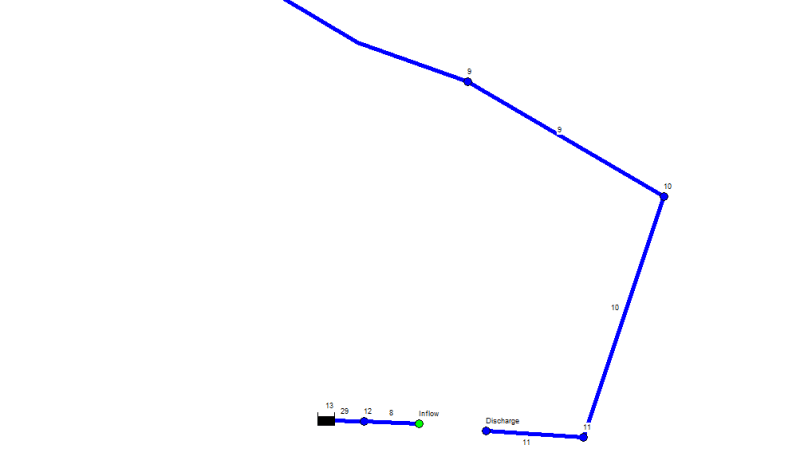Steven - Civil
Civil/Environmental
- Jun 26, 2019
- 6
I'm trying to generate a system curve from EPANet. I found a reply by Fel3 explaining how to do this here:
The problem is that my "Discharge" node has a base demand of -1 and I'm getting a "system ill-conditioned at node Discharge" I think it's because there's no reservoir going into the node. If I do put a reservoir there, only the pipe between the Discharge node and the reservoir actually gets any flow at all. So maybe I'm misunderstanding Fel3's post, but for me it doesn't seem to be working. Is there something I'm doing wrong or a better way to generate a system curve?
One thing I was thinking was just to put a pump in place of the nodes and run it at different HP's. Couldn't the system curve then be generated from the total losses + elevation head differences at each flow?
Thanks for any advice! Model is attached

The problem is that my "Discharge" node has a base demand of -1 and I'm getting a "system ill-conditioned at node Discharge" I think it's because there's no reservoir going into the node. If I do put a reservoir there, only the pipe between the Discharge node and the reservoir actually gets any flow at all. So maybe I'm misunderstanding Fel3's post, but for me it doesn't seem to be working. Is there something I'm doing wrong or a better way to generate a system curve?
One thing I was thinking was just to put a pump in place of the nodes and run it at different HP's. Couldn't the system curve then be generated from the total losses + elevation head differences at each flow?
Thanks for any advice! Model is attached

